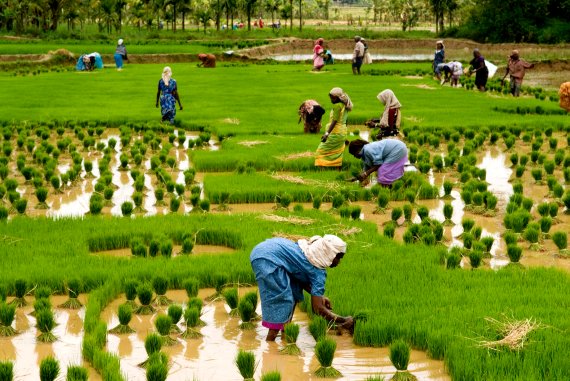‘Golden Rice’ is the name of a yellow variety of rice that was developed ten years ago. After genetic modification, this rice contains a large amount of vitamin A and is thus a strong weapon against death and blindness caused by malnutrition. Many developing countries, however, are reluctant to introduce GM products. India, for example, is keeping its borders tightly shut against Golden Rice. Professor of Economics Justus Wesseler studied the consequences of this policy and presented his results at his inauguration as a professor on 22 January. Using his Real Option Model, Wesseler calculated the damage of not introducing the GM rice in India: 1.4 million life years in the past 10 years, most of the victims being children.
*1.4 million life years represent so much human suffering. Who is*responsible for this?‘The government weighs the pros and cons: what are the advantages of introducing GMO rice and what are the risks? The WHO and the World Bank support the introduction because it saves children’s lives, that much is certain. But Greenpeace and an influential activist like Vandana Shiva are firmly opposed. And if 10 to 20 percent of the population is also against GMOs, then the government runs the risk of losing the next election. So up to now, the Indian government has decided that the risks of Golden Rice are bigger than the advantages. By calculating the advantages, we now know the cost of the anti-GMO lobby in India. That amounts to at least 200 million dollars a year.’
*Opponents of GMOs claim that we can’t exclude the health and*environmental risks of GMOs.‘From a scientific perspective, there aren’t any health or environmental risks in GMOs. They’re as safe as traditional crops. We don’t have 100 percent certainty, but no one can claim a safety level of 100 percent. That just doesn’t exist. And it’s nonsense to talk about ‘unknown risks’ as the opponents do. You can’t study unknown risks; moreover, there might also be unknown advantages. As scientists, we have to think consistently. We can only investigate risks if we have a theory that explains which aspect of GMOs can present a danger.’
Youcalculate the lost life years tobe an economic loss of 200 milliondollars annually. How did youreach that amount?‘In the model the value of a life year in India is set at 500 dollars. That’s not my own ethical standpoint, but rather an amount relating to labour productivity. The poorer a country is, the less economic value is attached to a life year. In the US and Europe, a life year is worth more because labour productivity is higher. But what I find more important is that children die unnecessarily in India.’
The EU is also concerned about GMcrops. Have you studied the lossthere?‘In 2007 I calculated that not accepting the GM maize MON810 costs the EU more than 130 million euros a year. And in 2004 I studied what the cost to the EU was of refusing to introduce GM sugar beets. That was 100 to 160 million euros a year. The ban on GMOs doesn’t cost human lives in Europe, but it does lead to lower yields per hectare, a higher use of pesticides and the emission of more greenhouse gasses. The environmental advantages of GMOs are evident.’
*The anti-GMO lobby will claim that you’re being paid by industry.*Who financed your study?‘I did my study of Golden Rice in India myself without any external financing. I also study the socioeconomic effects of GMOs at the request of and paid by the European Union. I’m not paid by industry. I believe that we should think about whether the opposition to GMO technology is ethically justifiable if it leads to more dead children in India and in numerous other developing countries.’

